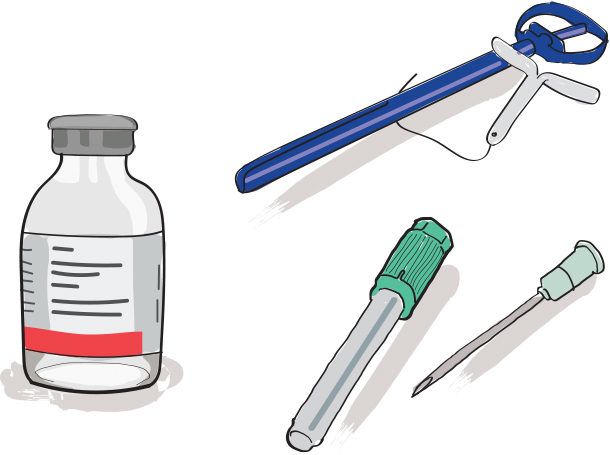What is the best synchronization protocol for cows and heifers?
There isn’t an easy answer to this question. Research suggests some protocols perform better than others, but just because research says it’s the best protocol doesn’t necessarily make it the best protocol for your operation. I always advise people to ask themselves three questions before choosing a synchronization protocol:
- How many times am I willing to put the female through the chute?
- How much am I willing to spend on synchronization drugs?
- What are my expectations for results?
Once you know the answers to these questions, you can objectively analyze which synchronization program is the best fit for your operation. No matter what the research or experts tell you, the best protocol for your operation is one that aligns with your goals. It’s the protocol you are 100% confident you can perform perfectly from start to finish.
What criteria should be used to ensure females are good candidates for A.I.?
The answer depends on whether you are synchronizing heifers or cows.
Criteria for synchronizing heifers:
- Should have achieved 60% to 65% of mature bodyweight
- Minimum of 50% should have a reproductive tract score of 4 or greater at six weeks before breeding
If you don’t have a veterinarian in your area that offers reproductive tract scoring, don’t panic. You can achieve the same thing by visually observing heifers for heat in the weeks and months leading up to breeding. You want to observe at least 50% are cycling six weeks prior to breeding.
Criteria for synchronizing cows:
- Body condition score of 5 or greater at calving
- Group should average a postpartum interval of 40 days or greater at the beginning of the protocol
- Each cow should be a minimum of 21 days postpartum at the time of CIDR insertion
- Low incidence of calving difficulty
Where is the best place to give synchronization injections? What needle size should be used?
Synchronization drugs should be given in the muscle (IM), with the exception of Lutalyse Hi-Con, which can be administered IM or subcutaneously. When administering synchronization drugs, I recommend using a 1-and-a-half-inch, 18-gauge needle. I also recommend that you should wear gloves when handling any synchronization drugs to avoid contact with the skin.
Can CIDR inserts be reused?
CIDR inserts are labeled as a one-time-use item by the manufacturer, and I recommend following this guideline. CIDR inserts are one of the most expensive parts of a synchronization protocol, retailing at $10 to $12, so it is tempting to cut that cost in half by using a CIDR for a second time. The next time you are tempted, though, ask yourself what another A.I. calf is worth to you. It’s likely a lot more than $5 to $6.
Can vaccines and dewormer be given while the female is in the chute for CIDR insertion?
A pre-breeding vaccination program is an important part of an overall successful A.I. program. However, several studies have shown injection of naïve heifers with a modified-live vaccine (MLV) around the time of breeding resulted in ovarian lesions and decreased pregnancy rates. Therefore, I recommend all pre-breeding vaccinations be given at least 30 days prior to breeding.
While there isn’t any research that suggests administering dewormer at breeding will have a negative impact on fertility, I recommend it be done at least 30 days prior to breeding as well. The less stress put on females around breeding time, the better your success. For optimal results, it’s best to do as little as possible to the females during the synchronization and breeding process.
How soon can cattle be moved after insemination?
The most critical time periods for embryonic development occur between day five (when the embryo begins its migration from the oviduct to the uterus) and day 42 (when the embryo has made definitive attachment to the uterus). Research indicates shipping cows during this critical time in embryo development can cause a 10% decrease in pregnancy rates. The best time to move cattle is prior to insemination or days one to four post-breeding. If you can’t move them within this time period, it’s best to wait until after day 45.
Despite what research might say, no single synchronization protocol fits every operation. Know your operation, follow the suggestions above and trust your gut. ![]()
ILLUSTRATION: Illustrations by Corey Lewis.

-
Sarah Thorson
- U.S. Beef Marketing and Education Manager
- Genex
- Email Sarah Thorson









